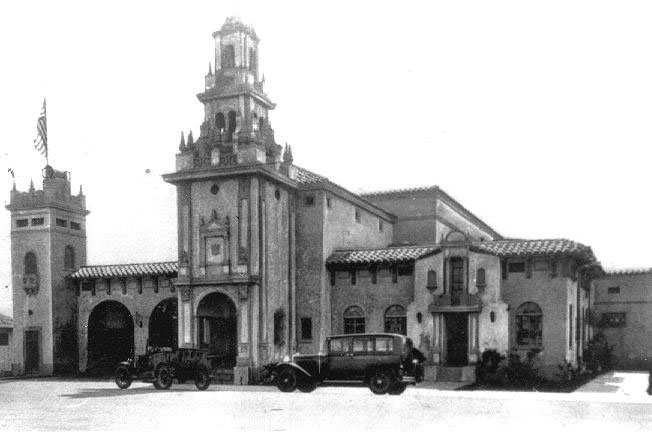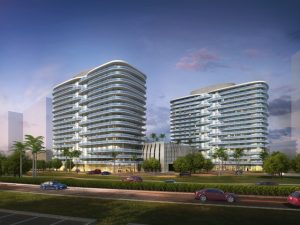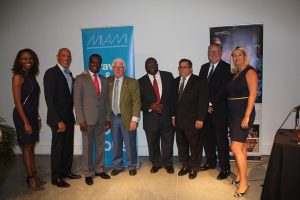
[flickr_set id="72157668224239663" max_num_photos="8"]
A Brief History
INDIANS, THE MILITARY TRAIL, AND A SETTLEMENT CALLED ARCH CREEK
In the final phase of Indian inhabitation of the area the eventually became “North Miami,” the United States Army Soldiers in 1856 cut a Military Trail through nearly impassable thickets and rivers connecting Fort Lauderdale to Fort Dallas at the mouth of the Miami River. This eight – foot trail, Dade County’s first roadway, crossed a unique natural bridge in an area that would attract a settlement that early on would be known as Arch Creek. Even before 1890 a handful of adventuresome pioneers spent brief periods around the Arch Creek Natural Bridge, a centuries-old Indian settlement.
THE FIRST PIONEER
In 1891, Charles J. Ihle was the first to put down roots in the Arch Creek vicinity. He purchased 80 acres from the State of Florida at one dollar an acre in the area of today’s N.E. 116th Street and Biscayne Boulevard. The place was so remote that his nearest northern neighbor was thought to live in Ft. Lauderdale. Mr. Ihle built a temporary palmetto frond shelter. During the next 27 years he grew shallots, coontie, bananas, sugar cane, Puerto Rican pineapples, lemons, guavas, limes, rose apples, Jamaican apples, and tomatoes.
ARRIVAL OF THE RAILROAD AND THE ARCH CREEK FARMING COMMUNITY
Henry Flagler’s railroad passed through the Arch Creek area in 1896 on the way to Miami. An overland mule-driven stagecoach using the Military Trail from Lantana to Miami was put out of business by the railroad. Just after the turn of the century, a group from Elmira, New York, purchased land near the Natural Bridge, set up a tent camp, and planted grapefruit groves. By 1907 the farm yield around Arch Creek was 400 acres of vegetables and 40,000 crates of grapefruit. In the next twenty years a trickle of hardy pioneers arrived at the Arch Creek railroad depot, purchased land, built homes, and created a thriving farming community.
THE COMMUNITY CENTER MOVES
By 1905 the area surrounding the nine year old Arch Creek Railroad Depot had become the community’s hub. It was located at 125th Street and the F.E.C. tracks. That year a post office and a school were opened nearby. By 1912, eighteen homes, a church, a general store, a blacksmith shop, and two tomato packing houses were located around the railroad. The population was estimated at less than one hundred. Farming was still the principal occupation.
THE 1920’S LAND BOOM
The Florida land boom that was underway in the 1920’s spread to the Arch Creek farming community. The Biscayne Canal was dug in 1924 to remove farmland from flooded conditions, As a consequence, the soil began to lose its moisture, and the farming which had been the backbone of the economy, was no longer profitable. However, in step with the times, this drained land became available for partitioning, lot sales, and development.
NORTH MIAMI’S BIRTH —- 1926
Thirty-eight out of the forty-seven registered voters, at the encouragement of developers Earl Irons and Arthur Griffing, showed up and voted to incorporate into a town on February 5, 1926. North Miami, between 1926 and 1931, was named “TOWN OF MIAMI SHORES,” partially because its early eastern boundary was the Atlantic Ocean! The town limits were: bounded on the South by Miami and Miami Beach, on the East by the Atlantic Ocean, on the West by 17th Avenue, and on the North by a line which approximates Golden Glades Drive, or 166th Street. Incorporation moved costs from developers to residents and lot purchasers. Late in 1926 a bond issue of $287,000 was passed to build streets, sidewalks, a town hall, a water system, and fire protection.
THE EVENTS OF 1931
Seven miles of Atlantic Oceanfront beachland property from the Broward County line southward to Surfside were removed from the town limits as a result of a 1931 Florida Supreme Court decision. The 1926 hurricane ended plans for a causeway to deliver municipal services to that area of town. With no services being received, the beach area instituted a lengthy court lawsuit to separate and form their own community. The wealthy Shoreland Company, located to the south of the Town, urged the 1931 Florida Legislature to officially grant their huge development the name, “Village of Miami Shores,” as a name. The next step was for the local population to choose a new name. The municipality was renamed, “TOWN OF NORTH MIAMI.”
THE QUIET 1930’S
During the Depression years, in 1933, Mrs. Cecille Sevier and Mrs. Ella S. Klefeker became the first two women elected to the Town Council. The 1940’s census stated that 1973 inhabitants lived in the “Town of North Miami.”
POST WORLD WAR II GROWTH
At the end of World War II in 1945, the large and constant influx of former military veterans and their young families changed the face of North Miami by ushering in a great growth period. Homebuilding, road building, shops, stores, and office business construction now continued for decades almost without stopping. By 1951, it was reported nationally that North Miami was one of the fastest growing towns in the United States. [Recently it reached a population of 50,000.] Partially to meet this challenge of fast growth, the voters of North Miami in 1952 voted to adopt a new charter and a new name. The new charter, enacted as an official statute of the Florida Legislature on May 27, 1953 provided for the establishment of a full-time administrative head. (A City Manager form of government), to carry out the policies of the elected Mayor/Council. The new and present name officially introduced on this date. — The CITY OF NORTH MIAMI.
Information compiled by the Greater North Miami Historical Society. Recommended book reading:
“Biscayne Country” by Thelma Peters



